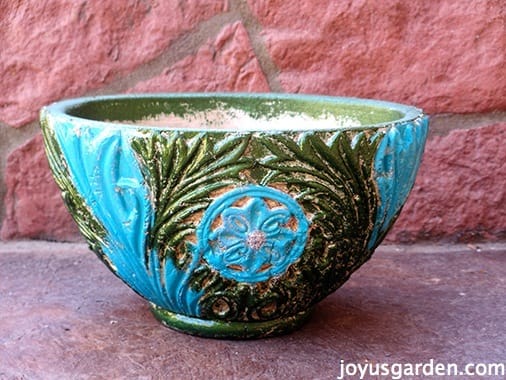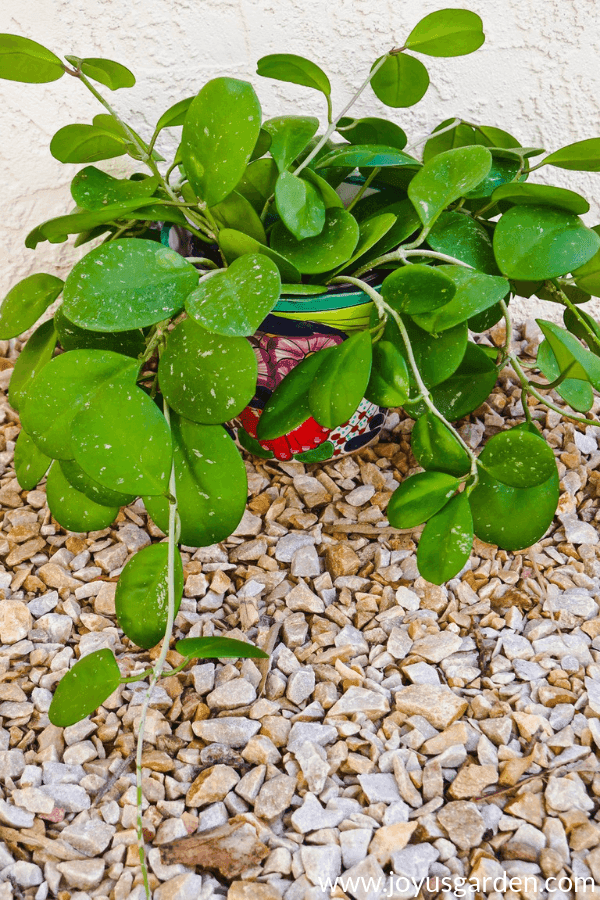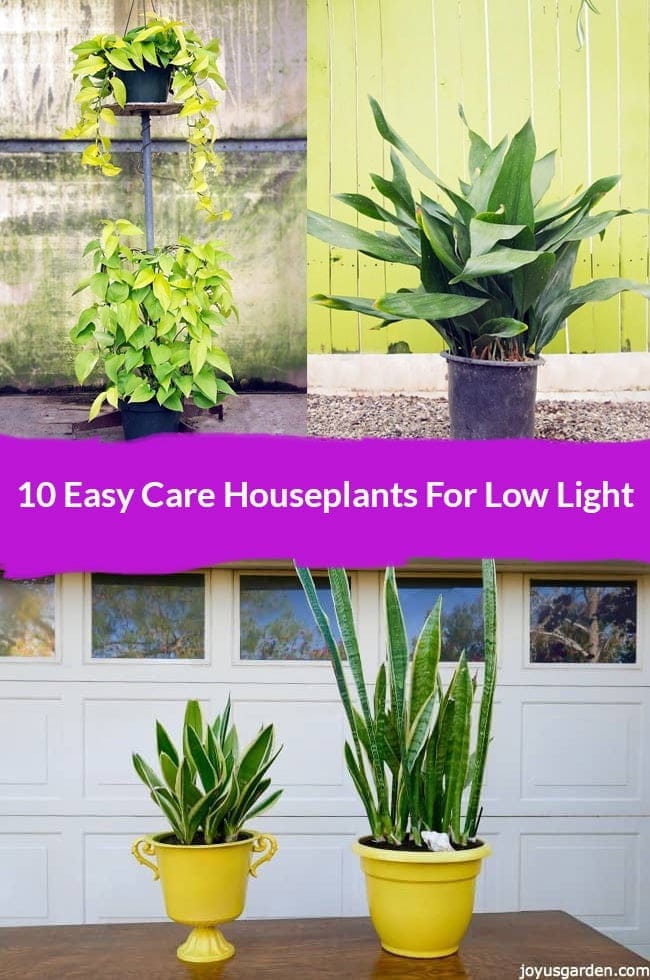Kalanchoe Care As A Houseplant & In The Garden
Oh, how I love succulents! And a succulent with lots of long-lasting flowers is just the cat’s meow. Enter the popular Kalanchoe blossfeldianas that are most commonly sold as indoor plants. In Santa Barbara, where I used to live (USDA zone 10), mine enjoyed the great outdoors year-round. This is about Kalanchoe Care indoors and outdoors, or Kals as we call them.
These long, lasting blooming plants with colorful flowers will brighten up both your garden and home. If you want the flowering period to be more long-lasting, buy your plant with at least half the flower buds partially or not yet opened. They’ll gradually open after you get them home.
I buy mine at the farmers market, and although we used them a lot in the interiorscaping trade in offices and homes, I had never grown them in the garden before. I’ve discovered that Kalanchoes bloom almost all year round here with very little care. My kind of plant!
Botanical Name: Kalanchoe blossfeldiana
Common Names: Kalanchoe, Flowering Kalanchoe, Florist Kalanchoe, Flaming Katy
NOTE: This post was published on 07/16/2014. I’m updating it on 06/22/2023. It’s one of the very first posts that I ever wrote. My how blogging has changed!
I’ve since written newer posts on Kalanchoe Care as houseplants. Rather than extensively update this post, I will list these more current posts Kalanchoe Care, Calandiva Care, and Growing Kalanchoe FAQs with more information and tips.
Kalanchoe Care In The Garden

Light Requirements
Bright shade. Mine get bright light and one or two hours of direct sun in the summer, no more. Too much direct sunlight will cause burn.
Water Requirements
Once a week, thoroughly. They’re succulents, so they like to dry out between waterings.
Soil
Mine are planted in pots in half organic potting soil and half Succulent and Cactus Mix. Kalanchoes are succulents susceptible to root rot; they must be planted in well-draining soil.
Fertilizer
I don’t use any. I plant with worm castings, then top dress with worm castings and compost every spring. Once or twice during the warm months, I’ll water in some seaweed extract.
Pests
None so far, but then they can be susceptible to mealybugs and aphids.
Pruning Tip
I trim off the spent flowers, taking the stem down to where it meets the foliage. I don’t have to do it too often because the flowers are long-lasting, and the plant looks better this way.
Kalanchoe Care As Houseplants

Now, onward to caring for them as houseplants. At the end of this post, I touch briefly on how to get them to bloom again indoors. Hint: it’s not easy.
Light Requirements
Give yours lots of bright indirect light. As bright as possible, something close to but not in a south and/or west-facing window. Keep it away from the hot windows – touching that glass will burn it. Ouch!
Water Requirements
Every two weeks in the warmer months. Wait until the soil drys out before watering again. And don’t let it sit in water. Remember, they’re succulent plants that store water in their fleshy leaves and stems, so keeping them too wet can cause mildew.
Too much moisture will also lead to root rot. They like to be kept on the dry side.
Tip: Yes, that paper or foil wrapping may be prettier than the grow pot but remove it when you water your plant. Remember, the Kalanchoe is a succulent, and too much water building up in the bottom will drown it out.
Soil
Use a potting soil mix formulated for houseplants with good drainage. A mixture of half potting soil and half Succulent and Cactus Mix would be fine. That’s what I used to plant up my new pink Kalanchoes.
Tip: Make sure the pot has drainage holes so the excess water can freely flow out.

Temperature
I say if your home is comfortable to you, then your houseplants should be just fine too. They would enjoy a vacation outdoors in the warmer months (refer to outdoor care above).
Fertilizer
Use an organic balanced liquid fertilizer like Sea Grow if you feel yours needs it. Easy does it—only two yearly applications – once in mid-spring and the other in mid-summer.
Here are some of our houseplant guides you may find helpful: 13 Stores Where You Can Buy Houseplants Online, 6 Low Maintenance Plants For Travelers, 11 Pet Friendly Houseplants, Tips For Buying Houseplants, Best Low Light Indoor Plants, Easy Care Office Plants, 7 Easy Care Floor Plants, 7 Easy Tabletop & Hanging Plants
Pests
Keep an eye out for Mealybugs. They leave behind a residue that looks like specks of cotton. Aphids and Scale can also be an issue.
Pruning Tip
The foliage grows very densely. I snip away some of those leaves growing over the blooms. Those purdy little flowers will show more!
Getting Kalanchoes To Rebloom
Now, on to how to get them to bloom again. If yours hasn’t ever repeat bloomed, don’t feel bad. I’ll start by saying “good luck” because you must work for it.
Kalanchoes, like Poinsettias, are photoperiodic. This means they react to periods of light exposure and need at least 12-14 hours of darkness to bloom again.
Chances are, if you have them in your home, you have them in a room that isn’t getting that amount of complete darkness. Starting in winter, you must put them in a closet or a pitch-black room for 12-14 hours. And yes, they need that every night for two months. Be sure to cut back on the watering too.
Kalanchoe Blossfeldiana Flower Colors
Kalanchoes are known for their beautiful flowers, which come in vibrant red, orange, and pink shades. You can also find them in white and more subtle shades of pink. There are bi-color flowers as well.
The flowers are long-lasting, and the rich green leaves are attractive and shiny. A great blooming plant for the garden or your home!



Kalanchoe Care Video Guide
(Warning: This is an old video!)
In conclusion, taking care of a Kalanchoe plant is not as daunting as it may seem. With the right light levels, water, and well-drained soil, your kalanchoe can thrive and bring life to any room in your house or the right spot in your garden.
We have written more current posts on Kalanchoes: Kalanchoe Care, Calandiva Care, and Kalanchoe FAQs with lots more information and tips.
Note: This post was originally published on 07/16/2014 and updated on 06/22/2023.
Happy Gardening,

This post may contain affiliate links, you can read our policies here.
- About the Author
- Latest Posts
Nell, the founder of Joy Us garden, was born into a gardening family and grew up in Connecticut’s countryside. After living in Boston, New York, San Francisco, & Santa Barbara, she now calls the Arizona desert home. She studied horticulture & garden design, working in the field all her life. Nell is a gardener, designer, blogger, Youtube creator, & author. She’s been gardening for a very long time & wants to share what she’s learned with you.







Hi there Miss Nell.
I live up in Canada and have 4 Kals of my own. Right now they’re living outside on my porch after surviving a winter in the house under a grow light. They’ve so far received new pots (lager than the wimpy 4″ pots they came in) and have received a teeny bit of liquid fertilizer when I was taking care of some transplanted shrubs.
Fall hits our neck of the woods around late August here (coming in the house at night to avoid chill) and I’m wondering when I should Fertilize again and when I should start keeping them in the dark If I want them to bloom for Christmas. 2 months in advance, right?
How am I doing. Thanks for all this awesome reading material! A.M.
Hi there A.M. – You can give them a fertilizing at 1/2 strength now if you’d like, but no later. You don’t want to feed them too close to their rest period. Actually, around the 1st of Sept. you can put them in a dark room (make sure it’s completely dark) for 12-14 hours at around 5 or 6 pm. Or, simply put a dark cloth over them. Then, bring them out in Oct & give them light. Mine bloom off & on all year but they grow outdoors. Also, be sure to cut off all the flowering growth, stems too, to encourage new growth & flower buds. Thank for reading – I hope that helps! Nell
Thanks Miss Nell! I’ll be sure to do that. I’ve also been enjoying your You-Tube videos. I know all about trimming after flowering. 🙂 The fertilizing was the head scratcher for me.
None of our windows let in UV light. Will a simple Grow-Light be enough for them after their dark time? Thanks again! A.M.
p.s. Great blog! 😀
I have bought a kalanchoe from ikea in a small plastic cup.
i want to give it as a return gift. but i have bought it a week before and the leaves are drying one by one. i live in phoenix. i amanita sure if i will be able to keep it safe till next week for my guests. i have watered it only once. could the small cup be the reason for it to dry or is der anything else to be done. i want it to look good before giving it to guests.
Hi Sindhu – It’s hard to say because when you buy a plant at a big box store like Ikea, you have no idea how long it’s been there & what kind of care it’s received. It could have been over or under watered or not had enough light. Typically, the smaller the grow pot, the more often you have to water. It also depends on what kind of soil it’s planted in. If the Kal is outside in Phoenix, it could simply be too hot for it. Hope that helps, Nell
Hi Nell, I love the info on the kal. I received one as a gift from my husband for my birthday and now the flower heads are wilting, they are falling over. I don’t know what is wrong. Give me a vegetable garden, and I can grow anything, a flowering plant, I have black thumbs. Please help before I kill it!? :}
Hi Julie – Thank you! The flower heads are most likely wilting because the plant could have been overwatered (by you or the source it came from). These plants are succulents after all & like to be kept on on the drier side (but not completely dry like a cactus). They like nice bright light. Mine grow outdoors & repeat flower but unfortunately, when grown as houseplants, it’s hard to get them to flower again. Hope that helps! Nell
Hi Julie, I bought this Calandiva which is a Kalanchoe plant from Walmart and have owned this indoor house plant for three weeks and four days now. It has beautiful red flowers on it and is in a (4 inch. size pot).
I live in Oceanside, CA and the temperature inside my house is usually between 67 to 75 degrees during the day time and also in the evening. I place this Kalanchoe plant near by a window during the morning hours five days a week where it can receive sunlight about 2 to 4 hours.
I only water this plant once per week when the soil is dry but I noticed a few days ago that (three of the leaves located at the bottom of this Kalanchoe plant) is dried at the tip of the leaves and also the tip of the leaves are black. Why are the leaves drying out and changing color? Otherwise the rest of my Kalanchoe plant is doing well and the majority of the plant’s leaves are really beautiful and green.
Hi – Black leaves are usually a sign of cold damage or too much water. The plant could have been over watered before you even bought it. Also, the leaves grow so densely that you’re bound to loose some, especially the ones that grow at the base of the plant. Nell
Hi nell
My beautiful plant has alot of knats. Please tell me what i can do. Thanks